|
Important Disclaimer: This page is only included for historical interest and information; it does NOT constitute Medical Advice. Hormone treatment should always be done under the supervision of a qualified medical professional.
Introduction
My Journey In my teens I learnt about transsexuals such as Tula and adopted an androgenous appearance when at university in the 1980's - always hoping to be called "Miss" by strangers. My mother was convinced that I was "gay"! In May 1994 I became an expat living in the Middle East, where female contraceptive pills were available from local pharmacies without prescription. I soon began taking Diane:31 as though the pills were sweets. The most obvious effect was my reduced libido - within a month I could have shared a bed with Miss World and would be just worried whether I had brushed my teeth! However, the pills also caused severe nausea and a metallic taste in the mouth, so after perhaps five or six weeks I would stop taking them for a few weeks before starting again! Over the next two years my oestrogen intake oscillated widely from nothing to far too much.
The changes were very slow and imperceptible - e.g. it's impossible to observe that your bust is 0.02 inches larger today than it was yesterday. However cumulatively over months the effects become quite substantial and noticeable - to the extent that one night two drunken girls told me that I needed a bra. In June 1997 I was planning my transition and SRS when the unexpected happened - I met a girl whom I became besotted with. I ceased taking hormones but my sex drive, libido and penis never completely recovered - to the disappointment of both of us. I was probably close to a permanent "hormonal castration" when I stopped taking Premarin. By mid-1999 it was sadly obvious that our relationship had no future as I had again decided (for reasons that I can never explain) that I needed to live my life as a woman, whilst she just wanted a "normal" husband and a father of her children.
1. Before my
Orchiectomy From September 1999 until my orchiectomy in May 2002 I took a pill morning and night for a daily dose of 0.1 mg Ethinyl Estradiol and 0.05mg Levonorgestrel. This seems to have the desired benefits without any noticeable bad side effects at all - and the monthly cost was a very reasonable $7. Another contraceptive pill I took in addition for a while (see Facial Hair) was Diane-35 from Schering AG which contains 2mg Cyproterone Acetate and 0.035 mg Ethinyl Estrodiol. Antiandrogens: Diane-35 is of interest to transsexual women because Cyproterone Acetate is progestogen which acts as an antiandrogen, helping (among other benefits) to slow the growth of facial and body hair. A pack of 21 tablets cost me about $8, or $12 a month. If I had continued to take Diane-35 then in retrospect I may have begun taking three or four pills daily, while simultaneously dropping the Nordiol:21 in favour of a progesterone-only tablets such as Duphaston in order to help minimise any potential side effects or long-term risks. I stopped taking Diane-35 because I obtained a prescription for the antiandrogen Eulexin from Schering AG, I took two capsules three times daily, each containing 125mg of Flutamide (a nonsteroidal anti-androgen). Eulexin proved expensive (I was paying about $150 a month, which I subsequently discovered was in fact very cheap!) and at the beginning of 2001 I switched to the much cheaper and easier to obtain antiandrogen Aldactone from Searle ( 2 tablets daily, each containing 100mg Spironolactone, and costing just $30 a month). However the Aldactone began to apparently give me stomach upsets and at the end of 2001 I went full circle by changing to Androcur from Schering AG (1 tablet daily, containing 50mg Cyproterone Acetate, and costing about $40 a month) which has the same antiandrogen as Diane-35. Progesterone: It is commonly recommended that transsexual women take Progesterone as well as Oestrogen to help promote breast development. In addition to my intake of progesterone via the Nordial:21 pill, I have since January 2001 have been taking supplemental progesterone. I have tried both Cyclogest from Cox Pharmaceuticals (one pessary daily containing 400mg Progesterone PhEur) and Duphaston tablets from Solvay Pharmaceuticals (two tablets daily, each containing 10mg Dydrogesterone). 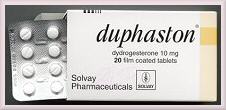 After a few
months taking Cyclogest and/or Duphaston, I could
feel a greater fullness in my breasts which may well be thanks to
the additional Progesterone hormones. I currently take
Duphaston, preferring it over the somewhat awkward Cyclogest
pessary. After a few
months taking Cyclogest and/or Duphaston, I could
feel a greater fullness in my breasts which may well be thanks to
the additional Progesterone hormones. I currently take
Duphaston, preferring it over the somewhat awkward Cyclogest
pessary.Summarising the info above, my daily regimen during 2001 was:
Notes:
Another regimen I considered, which didn't require specific antiandrogen drugs:
And an easy to obtain and quite cheap hormone regimen that I actually used for a while:
(Note: On balance, one Nordiol and two Diane-35 may have been a much better combination because of its extra antiandrogen, but this combination would then be light on progesterone.) Please note that these hormone regimens may not suit other transsexual women. The optimal hormone regimen will vary from individual to individual and I would recommend experimenting to find what works best with the minimum of contradictions (side effects). Also, many medical experts have their preferences and opinions. Below is an example of a hormone regimen suggested by a Canadian clinic that seems reasonable, but other clinics have their own variations and recommendations.
For those that want to learn more about hormones, here's two important links:- FAQ: Hormone Therapy for M2F Transsexuals and Some Typical Hormone Regimens. Fat and Weight: A big problem when I started taking hormones long-term in 1997 was that I found that female type fatty deposits were starting to accumulate in my breasts, upper arms, buttocks, thighs and even ankles. However, I wasn't losing enough muscle mass and male-typical fat, particularly around my waist, to counter this - basically I was gaining weight. I had to join a gym and rigorously exercise and diet to get close to the ideal female weight (66kg/145lbs) for my height (5ft 9in).
2. After
my Orchiectomy
Prevara is more commonly taken than Duphaston by transsexual women, but as I was already taking Duphaston he told me to continue with this. I eventually reduced the dose to one tablet per day. It was later suggested that I reduce the Premarin intake to just 0.625mg/day, but I instead began to take a single 1.25mg pill with my Duphaston. Thus my daily regimen became:
Metformin:
In early January 2003 a visiting friend of mine (and a doctor) suggested
that I should take Metformin. Although
normally a drug associated with diabetes, it's also considered
useful for aiding and enhancing the body fat redistribution (including
limbs and face) of transsexual women taking oestrogen.
The doctor's prescription was for Glucophage from Lipha Sante (initially 2 tablets daily, each containing 500mg Metformin - $7.50 per pack of 100, $4.50 per month). After a week, continuous nausea and occasional vomiting made me decide (without any professional medical advice) to reduce my dose to one tablet a day. This thankfully helped my nausea a lot, indeed the sickness had nearly gone completely after a month of use. In early February 2004 I optimistically anticipated being wined and dined by my boyfriend for Valentine's Day. I decided that over four years continuously on hormones my body fat was probably as well redistributed as it was ever going to be, and that enjoying a bottle of expensive wine was preferable to continuing to take my Glucophage pills!
3. After
my SRS
I took the second injection a little early - 10 days after the first. This created an estrogen high followed by an estrogen low for several days before my next injection. The deliberate result was that I had a 28-day hormonal cycle roughly mimicking the period of a cis-woman. I was not conscious of the resulting mood swings and changes in my behaviour, but my husband was! I also continued to take Duphaston. Despite the many medical reports claiming that taking progesterone has no benefits for transwomen, from experience I firmly believe that it helps to maintain my physical, mental and sexual health as a woman.
4. Long Term
I stopped taking my Estradiol injections but after a few months using just the patches I was increasingly suffering from headaches, fatigue, nausea, hot flushes, ... I wasn't a happy bunny! The doctor diagnosed that my oestrogen levels were too low and doubled the dosage by moving me from Evorel 25 to Evorel 50. Unfortunately, Evoral 50 was not available from local pharmacies so I had to just two Evorel 25 patches instead. I soon felt much better but was still not completely back to normal, so a few months later he moved me to Conti patches. This is a combined patch which releases both oestrogen (50mg estradiol a day) and progesterone (170 mg norethisterone a day). I no longer needed to take Utrogestan. The Conti patch seemed to hit my hormonal sweet spot. I no longer had any menopausal like problems, and occasional blood checks showed my estradiol levels as being between 60-100 pg/mL. That is an ideal level - minimising medication risks whilst avoiding potential problems such as reducing bone density and even cancer. But a problem was that in 2018 Evorel Conti became unavailable from my local pharmacies, instead I had to order them on-line. The cheapest I could find for a three months' supply (24 patches) was £75 (roughly €90) from a UK pharmacy, but add on shipping, taxes, customs and admin fees and it becomes about €150 - or c.$60 a month.
There are two problems with long-term hormone therapy - your body evolves (ages!) and the available treatments change. The use of HRT by menopausal women has soared in popularity in recent years, as result the demand for patches has outstripped supply and at the start of 2022 I ran out of Evorel Conti and was unable to obtain it anywhere. The next few months were farcical as my GP resorted to prescribing me various pills (usually contraceptives) that local pharmacies might have in stock - so much for a personalised plan based upon my physiological needs. I was almost back to where I was in the 1990's! The most available pills were Microlite (20 micrograms of ethinylestradiol and 100 micrograms of levonorgestrel) and Microgynon 30 (30 micrograms of ethinylestradiol and 150 micrograms of levonorgestrel). These contained the synthetic rather than the bio-identical form of oestrogen that my body had happily become used to, and side effects were soon obvious - not least nausea and very sensitive nipples. Thankfully, by mid-2022 the local pharmacies were able to obtain the Estradot patch (releasing 50 mcg of estrodiol per day) and I changed to this.
In late 2024 I was taking Estradot, Vagifem, and had resumed taking Utrogestan (100 mg progesterone daily) as I was no longer receiving progesterone via any other medication. As I reach age 60, whether I need both Estradot and Vagifem is the next decision.
Breast Development The hormone pills I began intermittently taking in 1994 initially had a dramatic effect - within 18 months I was a small B cup. But progress thereafter limited and by 2001 it was clear that my breast development had stopped at a full B cup. An assessment (aided by my boyfriend) was that they were still too small for my size and build and I reluctantly had breast augmentation - as do at least 50% of all transwomen.
Weight From my research c.2000 there seemed to be a link between taking female hormones and weight gain. A desire to reduce my hormone intake and thus weight was a minor driver for my having an orchiectomy. In practice there was no noticeable effect - good or bad - weight wise. I'm careful about what I eat and drink, and exercise daily (either a long walk, an ancient Jane Fonda workout session or a visit to a local swimming pool) in order to avoid moving from well-rounded to simply fat.
I have never had obvious chest, body and limb hair, and years on hormones have helped ensure that this has never become a problem. However, like the vast majority of transsexual women who start hormone treatment after puberty, facial hair and beard growth has been an issue. When I was young (early 20's) and had only light and sparse facial hair growth, shaving was an acceptable solution when I occassionally ventured out as a woman. Unfortunately by age 30 - as I again spent more time passing - as a woman my facial hair became a serious problem. The constant need for close shaves was inconvenient and despite generous use of soaps and creams, it caused unsightly rashes and skin irritation, particularly on my neck area. Also, despite the greatest care, a shaving cut is an inevitable occasional nightmare! I began taking the contraceptive pill Diane-35 which is commonly used by women who suffer from hirsutism (excess body and facial hair) as it helps stop scalp hair loss while decreasing body and facial hair. Before any benefits from Diane-35 were noticeable, probably because the dosage of Cyproterone Acetate was too low, I changed to taking the drug Eulexin which I believe is more powerful in its anti-hirsutism effect. As usual with hormones, the results were imperceptible, but by December 2000 - when I transitioned full-time - there was definitely a slowing of the rate of growth of my beard, and my skin was in much better condition. I found that an early morning “double wet shave” was sufficient for the working day, although I would repeat the shave if I was going out in the evening. However, by late 2001 it was obvious that hormones and anti-androgens were not going to completely stop my facial hair growth, and I thus began electrolysis and laser hair removal.
In 2006 my facial hair follicles seemed to finally give up the battle and since then I've been faced (!) with just the odd hair appearing, which can be plucked. The elimination of my beard significantly helped my ability to pass as a woman, and thus my confidence. But I regret that I didn't seek more treatment before my transition. |
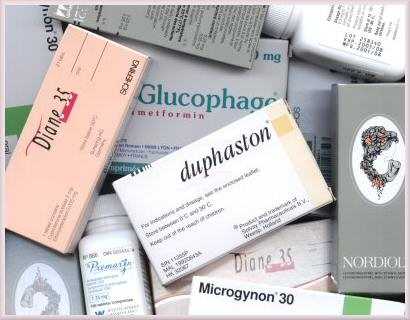
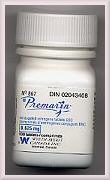 In
November 1996 - now age 31 -
I realised that I needed to stop the flip-flopping and become more sensible.
After some research (it was still pre-Internet) I settled on taking 0.625mg Premarin
pills three times a day. Premarin (extracted from the urine of
mares) is a very powerful estrogen and I began what was defi
In
November 1996 - now age 31 -
I realised that I needed to stop the flip-flopping and become more sensible.
After some research (it was still pre-Internet) I settled on taking 0.625mg Premarin
pills three times a day. Premarin (extracted from the urine of
mares) is a very powerful estrogen and I began what was defi


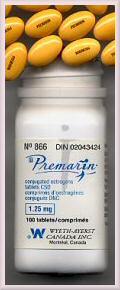 My doctor
recommended that I change to Premarin (which I had actually taken
previously) from Wyeth-Ayerst and stop
taking the Nordiol:21. The Androcur antiandrogen was
also now redundant. My daily regimen became:
My doctor
recommended that I change to Premarin (which I had actually taken
previously) from Wyeth-Ayerst and stop
taking the Nordiol:21. The Androcur antiandrogen was
also now redundant. My daily regimen became: However in
my experience it has at least two serious downsides, one is that no
alcohol should be consumed while taking Glucophage, the other is
very severe nausea.
However in
my experience it has at least two serious downsides, one is that no
alcohol should be consumed while taking Glucophage, the other is
very severe nausea.
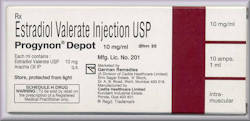 From research I became worried about the
potential risk of taking oestrogen orally long term, for example
constant the stress on my liver. I
discussed this with my
doctor and in 2007 my prescription was changed from Premarin tablets to a
fortnightly 10 mg intravenous injection of Estradiol Valerate. A
major downside of this was the cost - my pharmacy
bill immediately increased to over $140 a month!
From research I became worried about the
potential risk of taking oestrogen orally long term, for example
constant the stress on my liver. I
discussed this with my
doctor and in 2007 my prescription was changed from Premarin tablets to a
fortnightly 10 mg intravenous injection of Estradiol Valerate. A
major downside of this was the cost - my pharmacy
bill immediately increased to over $140 a month!
 5. Very Long Term (Current
situation)
5. Very Long Term (Current
situation)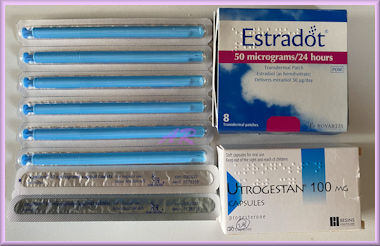 A recent medical development is the recognition that post-GCS transwomen
respond well to the use of vaginal creams and tablets that release
oestrogen. I thus began inserting Vagifem tablets (releasing
10 mcg of estrodiol over several days), the main challenge so far is keeping
the tablet in place, but if it works I should be able to move back to a
lower dose patch after a few months.
A recent medical development is the recognition that post-GCS transwomen
respond well to the use of vaginal creams and tablets that release
oestrogen. I thus began inserting Vagifem tablets (releasing
10 mcg of estrodiol over several days), the main challenge so far is keeping
the tablet in place, but if it works I should be able to move back to a
lower dose patch after a few months. In
addition to the laser treatments, in early 2002 I also began using Vaniqa
from the Bristol-Myers Squibb Company, a hair retardation cream
which contains eflornithine hydrochloride. Unfortunately it's
expensive, I paid an outrageous $119 per 30gm tube (about a 3 weeks
supply in my experience) for my first batch, but I think it was
worthwhile in delaying re-growth and lengthening the shave-less period
between laser treatments. I purchased subsequent batches of three
tubes for what worked out to be $75 a tube, but I have seen USA prices
of under $40 per tube on the Internet - if you have a prescription and
thus can avoid paying a so-called "consulting fee".
In
addition to the laser treatments, in early 2002 I also began using Vaniqa
from the Bristol-Myers Squibb Company, a hair retardation cream
which contains eflornithine hydrochloride. Unfortunately it's
expensive, I paid an outrageous $119 per 30gm tube (about a 3 weeks
supply in my experience) for my first batch, but I think it was
worthwhile in delaying re-growth and lengthening the shave-less period
between laser treatments. I purchased subsequent batches of three
tubes for what worked out to be $75 a tube, but I have seen USA prices
of under $40 per tube on the Internet - if you have a prescription and
thus can avoid paying a so-called "consulting fee".
 Back to Articles
Back to Articles (No spaces)
(No spaces)